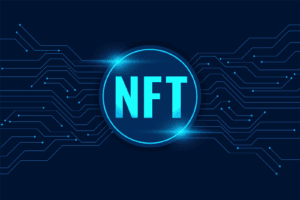Are you interested in trading but don’t know where to start? Do terms like stocks, forex, and options seem foreign to you? Fear not, as this ultimate guide will provide you with all the basics of trading and help you get started on your journey.
What Is Trading?
Embark on a transformative journey into the world of trading, where the dynamic exchange of financial instruments such as stocks, bonds, commodities, and currencies holds the key to unlocking profits. With the objective of buying low and selling high, or selling high and buying low, trading emerges as a captivating pursuit. Explore the vast landscapes of the stock market, forex market, and options market, where endless opportunities for financial growth await. Experience the power of online platforms like Deriv, granting traders access to a rich tapestry of financial instruments and an abundance of potential.
On Deriv, for instance, there may be a minimum withdrawal amount, which is the smallest sum that can be withdrawn from an account. The specific minimum withdrawal amount on Deriv may vary, and it’s advisable to check the platform’s terms and conditions or contact their customer support for the most up-to-date information on this topic.

Types of Trading
There are several types of trading, such as:
- Day trading involves buying and selling financial assets within the same day. The aim is to make a profit from small price movements. Day traders often use technical analysis and short-term charts to identify potential trades.
- Swing trading involves holding a position for a few days to several weeks. The aim is to capture medium-term price movements. Swing traders typically use fundamental analysis and longer-term charts to identify potential trades.
- Position trading involves holding a position for many weeks to months. The aim is to capture long-term price movements. Position traders typically use fundamental analysis and long-term trends to identify potential trades.
- Scalping involves making multiple trades within a short period, aiming to capture small price movements. Scalpers frequently use news feeds and order flow to identify potential trades.
What You Need to Start Trading
To start trading, you need the following:
- Capital: You need money for investing. The amount of capital required depends on the type of trading you want to do and the markets you want to trade in.
- Brokerage Account: You need a brokerage account to buy and sell financial instruments. There are several online discount brokers that offer low commissions and advanced platforms.
- A plan: You need a plan that outlines your goals, strategy, risk management, and money management. A plan helps you stay disciplined and consistent.
- Market Analysis Tools: You need market analysis tools to analyze price movements and identify potential trades. These tools include charts, news feeds, and fundamental analysis reports.
How to Choose a Strategy
There are several strategies, such as:
- Technical Analysis: Technical analysis involves analyzing price charts and identifying trends and patterns. Technical traders often use indicators and oscillators to identify potential trades.
- Fundamental Analysis: Fundamental analysis involves analyzing economic and financial data to identify potential trades. Fundamental traders often use news releases and earnings reports to identify potential trades.
- Quantitative Analysis: Quantitative analysis involves using mathematical models to identify potential trades. Quant traders often use statistical analysis and algorithmic trading to identify potential trades.
- Price Action Trading: It involves analyzing price movements without using any indicators or oscillators. Price action traders often use candlestick charts and chart patterns to identify potential trades.
Risk Management in Trading
Risk management is an essential aspect of trading. It involves managing your risk exposure to ensure that you do not lose more than you can afford. Some risk management techniques include:
- Stop Loss Orders: Stop loss orders are orders that automatically sell or buy a financial instrument when it reaches a certain price level. Stop loss orders help minimize losses in case a trade goes against you.
- Position Sizing: It involves determining the size of your position based on your risk tolerance and the size of your account. Position sizing helps you avoid taking excessive risks.
- Diversification: To diversify your interests, you spread them out over different markets and financial assets. Diversification makes it less likely that you will lose all of your money if one trade or market goes against you.
Final Thoughts
When done right, trading can be a very profitable pastime. But it’s important to keep in mind that dealing involves risk, so you should only trade what you can afford to lose. Start by learning the basics of investing and making a plan that fits your goals and how much risk you are willing to take. You can be successful if you are responsible, patient, and have a good plan.











